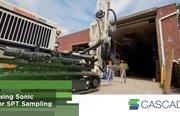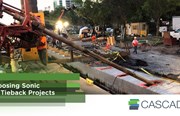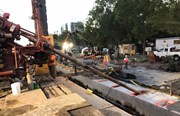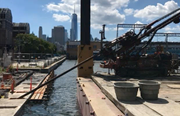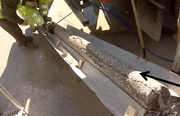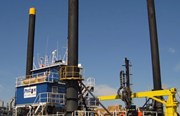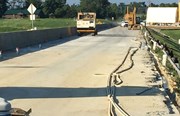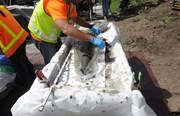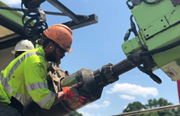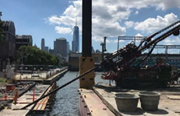Considering Sonic Drilling as Part of Your Geotechnical or Geo-Construction Project Investigation?
By: CascadeIncorporating high-quality, continuous Sonic soil cores into your investigation can potentially prevent over designing/over-constructing, and the associated cost as a result of incomplete or misrepresentative subsurface data.
In addition to obtaining conventional SPT’s and undisturbed samples, Sonic cores offer designers a more complete understanding of subsurface conditions in conjunction with conventional data. Moreover, because Sonic can penetrate and retrieve cores in any formation, the method also provides an accurate representation of conditions when/where conventional methods fail.
This is not to say that sonic is always the default replacement for standard or conventional drilling on the “everyday” geotech projects. But, it is a great solution for those projects where you have followed industry standards and/or the SOPs for on-site investigation, and there are significant data gaps.
Now, let’s consider how sonic benefits most geotechnical project objectives:
Samples Accurately Represent In-Situ Materials
The sonic drilling sampling process encapsulates the formation in-situ, layer by layer, through the mechanics of resonating a 5’ or 10’ core barrel. The encapsulated sample is then extruded into a polyethylene sleeve or other receptacle for lithologic inspection.
Formations made up of materials likes cobble and sand are difficult to sample, and typically not collectible with conventional drilling methods. Sonic allows you to obtain samples representative of subsurface materials, regardless the material size, as seen below.

Fine Sand with discrete preferential pathway for groundwater

Cobbles in a Sand & Gravel Matrix (100% recovery)
THE SPEED
The sonic drilling and coring process is 2-3 times faster than conventional drilling methods. When sonic is incorporated and compared on the basis of the entire project, sonic may also be a more economical option.
MINIMAL SITE IMPACT
The sonic process produces near 70% less drill cuttings(essentially the soil cores produced) and does not require the use of drilling muds, leaving only the borehole in even the most high profile site.
FLEXIBILITY TO UTILIZE A SUITE OF SAMPLING DEVICES
Should additional “conventional” borehole samples need to be collected in conjunction with those from sonic, the drilling platform can be converted to collect Shelby Tubes, SPTs, Diamond Rock Cores, etc.
The Sonic drilling method also offers a variety of other tools to help accomplish project goals without needing additional equipment, or changing project direction:
- Wireline High Speed Coring
- Dennison and Fixed-Piston Sampler
- Bedrock Packer Testing
- SPT
- Air/water DTH
- Others
LIMIT POTENTIAL DAMAGE TO SENSITIVE STRUCTURES
As it pertains to sensitive and fragile formations - such as earthen embankments - the sonic process can be performed completely dry without the use of fluids. This technique eliminates the concern of increasing formation core pressures (such as with muds, water, or air) which can contribute to hydrofracturing and embankment failure.
BOREHOLE VERTICALITY AND DEVIATION
Sonic drilling can advance tooling accurately and precisely in most cases within 1% deviation, even on an angle, which is helpful for knowing exactly from where your samples were taken, or for intercepting a desired subsurface target.
Sonic offers rig platforms to access nearly every project type. This allows samples to be collected below existing infrastructure on nearly every angle from vertical to horizontal.



An example of conventional wire line diamond rock coring from a sonic rig platform (non-sonic)
In summary, should your project have challenging formations to sample and/or if you’re looking to close some key data gaps in your BGR created by a conventional drilling method, incorporating continuous sonic cores may be the answer. Sonic cores can be collected on virtually any linear angle from vertical to horizontal, under existing infrastructure, or to maximize viability of subsurface features. Cascade’s sonic drilling platforms from wheeled to atv can access nearly all project types including barge mounted.
TO SEE A REAL-WORLD EXAMPLE OF SONIC DRILLING IN ACTION, CHECK OUT OUR CHESAPEAKE BAY TUNNEL PROJECT TO SEE HOW SONIC CAN BE USED DURING GEOTECHNICAL INVESTIGATION.



